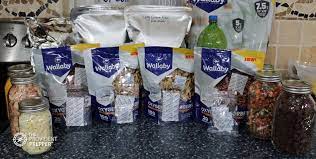
Breaking News
 The "Magical Winter" Lie We All Believe
The "Magical Winter" Lie We All Believe
 Perfect Aircrete, Kitchen Ingredients.
Perfect Aircrete, Kitchen Ingredients.
 Todays Pysops, Not Like Yesterdays Pysops
Todays Pysops, Not Like Yesterdays Pysops
 CIA is Broken… Can it Be Fixed?
CIA is Broken… Can it Be Fixed?
Top Tech News
 This tiny dev board is packed with features for ambitious makers
This tiny dev board is packed with features for ambitious makers
 Scientists Discover Gel to Regrow Tooth Enamel
Scientists Discover Gel to Regrow Tooth Enamel
 Vitamin C and Dandelion Root Killing Cancer Cells -- as Former CDC Director Calls for COVID-19...
Vitamin C and Dandelion Root Killing Cancer Cells -- as Former CDC Director Calls for COVID-19...
 Galactic Brain: US firm plans space-based data centers, power grid to challenge China
Galactic Brain: US firm plans space-based data centers, power grid to challenge China
 A microbial cleanup for glyphosate just earned a patent. Here's why that matters
A microbial cleanup for glyphosate just earned a patent. Here's why that matters
 Japan Breaks Internet Speed Record with 5 Million Times Faster Data Transfer
Japan Breaks Internet Speed Record with 5 Million Times Faster Data Transfer
 Advanced Propulsion Resources Part 1 of 2
Advanced Propulsion Resources Part 1 of 2
 PulsarFusion a forward-thinking UK aerospace company, is pushing the boundaries of space travel...
PulsarFusion a forward-thinking UK aerospace company, is pushing the boundaries of space travel...
 Dinky little laser box throws big-screen entertainment from inches away
Dinky little laser box throws big-screen entertainment from inches away
 'World's first' sodium-ion flashlight shines bright even at -40 ºF
'World's first' sodium-ion flashlight shines bright even at -40 ºF
The Do's and Don'ts – Foods Not To Use Oxygen Absorbers With

Understanding the limitations of using an oxygen absorber is a must-have skill for anyone serious about food storage and safety. Misusing them could lead to spoiled food, wasted resources, and even health risks like food poisoning. So, let's delve into the mystery of oxygen absorbers and discover which foods not to use oxygen absorbers with.
What Exactly Are Oxygen Absorbers?
The Oxygen absorber will play a crucial role in prolonging the shelf life of food and preserving its quality. They are typically small packets or sachets that contain iron powder, salt, or activated carbon. When included in food packaging, these absorbers actively remove the oxygen present in the package, creating an anaerobic environment.
The science behind oxygen absorbers is rooted in a chemical reaction known as oxidation. The primary component within oxygen absorbers is iron powder. Oxygen molecules in the packaging environment react with the iron to form iron oxide. This reaction creates a vacuum-like effect, depleting oxygen levels within the package.



